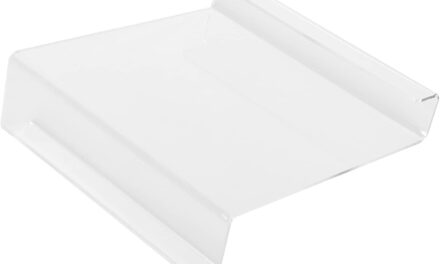Are you trying to figure out the optimal duration for your treadmill workout? Look no further! In this article, we’ll dive into the question of “How Long Should I Run On The Treadmill” and provide you with some insightful guidelines. Whether you’re a beginner looking to start incorporating treadmill runs into your fitness routine or a seasoned runner aiming to improve your endurance, we’ve got you covered. Stay tuned to discover the key factors that determine the ideal duration for your treadmill sessions and maximize the effectiveness of your workouts.
Determining Factors for Treadmill Running Duration
When it comes to determining how long you should run on the treadmill, there are several important factors to consider. These factors include your physical fitness levels, training goals, time availability, and any potential risk factors.
Physical Fitness Levels
Your current level of physical fitness plays a significant role in determining the duration of your treadmill running sessions. If you are a beginner, it is important to start slowly and gradually increase your running time over time. On the other hand, if you are already at an advanced fitness level, you may be able to handle longer running durations right away.
Training Goals
Your training goals also impact the duration of your treadmill running. If you are training for a specific event or race, you may need to incorporate longer running sessions into your routine. Alternatively, if your goal is to improve cardiovascular health or lose weight, shorter and more intense treadmill workouts may be more beneficial.
Time Availability
Another important consideration is the amount of time you can dedicate to treadmill running. If you have a busy schedule, shorter workouts may be more feasible. However, if you have more flexibility and time, longer running sessions can provide additional benefits.
Risk Factors
Lastly, it’s essential to take into account any risk factors that may affect your ability to run for an extended duration on the treadmill. This could include pre-existing health conditions or injuries. It’s always best to consult with a healthcare professional before embarking on any new exercise program, especially if you have concerns about your ability to complete longer treadmill workouts.
Understanding Moderate-Intensity and Vigorous-Intensity Aerobic Activity
Before diving into the specific recommendations for treadmill running duration, it’s important to understand the difference between moderate-intensity and vigorous-intensity aerobic activity, as this classification can help guide your exercise routine.
Definition of Moderate-Intensity Activity
Moderate-intensity aerobic activity refers to physical activity that elevates your heart rate and breathing, but still allows you to carry on a conversation comfortably. Examples of moderate-intensity activities include brisk walking, light jogging, and cycling at a moderate pace.
Definition of Vigorous-Intensity Activity
Vigorous-intensity aerobic activity, on the other hand, requires significantly more effort and causes a substantial increase in your heart rate and breathing. During vigorous-intensity activity, it becomes more challenging to carry on a conversation. Examples of vigorous-intensity activities include running at a faster pace, swimming laps, and high-intensity interval training (HIIT).
Benefits of Moderate-Intensity Activity
Engaging in moderate-intensity aerobic activity has numerous benefits for your overall health and well-being. It can help improve cardiovascular fitness, increase stamina, reduce the risk of chronic diseases such as diabetes and heart disease, and contribute to weight management.
Benefits of Vigorous-Intensity Activity
Vigorous-intensity aerobic activity offers similar benefits to moderate-intensity activity but with the added advantage of potentially burning more calories in a shorter amount of time. It can help improve cardiovascular fitness, build endurance, boost metabolism, and aid in weight loss efforts.

Recommended Guidelines for Treadmill Running Duration
Multiple reputable organizations provide guidelines on recommended exercise durations, including treadmill running. Understanding these guidelines can help you structure your workouts effectively and ensure that you are meeting your fitness goals.
American Heart Association Guidelines
The American Heart Association (AHA) recommends at least 150 minutes of moderate-intensity aerobic activity or 75 minutes of vigorous-intensity aerobic activity per week for most adults. For substantial health benefits, they suggest doubling these numbers to 300 minutes of moderate-intensity or 150 minutes of vigorous-intensity aerobic activity per week.
Centers for Disease Control and Prevention Guidelines
The Centers for Disease Control and Prevention (CDC) also suggest similar guidelines, recommending that adults engage in at least 150 minutes of moderate-intensity aerobic activity or 75 minutes of vigorous-intensity aerobic activity each week. They also advise adding strength training exercises at least twice a week.
American College of Sports Medicine Guidelines
The American College of Sports Medicine (ACSM) provides more specific recommendations for treadmill workouts. For healthy adults, they suggest a minimum of 150 minutes of moderate-intensity aerobic activity or 75 minutes of vigorous-intensity aerobic activity per week. Additionally, they recommend incorporating at least one session of high-intensity interval training (HIIT) each week.
Fitness Level Categories for Treadmill Running Duration
To further tailor the duration of your treadmill running sessions, it can be helpful to understand different fitness level categories. These categories can provide a framework for selecting appropriate duration targets based on your current fitness level.
Beginner Level
If you are a beginner, it’s important to start slowly and gradually build your endurance. Aim for shorter treadmill running sessions initially, such as 10 to 20 minutes, and gradually increase the duration as your fitness improves.
Intermediate Level
Intermediate-level runners have developed a decent level of cardiovascular fitness and may be able to handle longer running durations. Consider increasing your treadmill running sessions to 30 to 45 minutes at a moderate intensity.
Advanced Level
Advanced runners typically have a high level of cardiovascular fitness and are capable of enduring longer durations. If you fall into this category, aim for treadmill running sessions lasting 60 minutes or more, incorporating a mix of moderate-intensity and vigorous-intensity periods.

General Guidelines Based on Fitness Levels
Building upon the fitness level categories, let’s explore some general duration recommendations for treadmill running based on each fitness level.
Beginner Level Recommendations
For beginners, it’s crucial to focus on gradual progression and establishing a consistent routine. Start with 10 to 20 minutes of treadmill running at a comfortable pace, gradually increasing the duration by 5 to 10 minutes each week. Aim to reach 30 minutes of continuous running over time.
Intermediate Level Recommendations
Intermediate-level runners can increase their duration targets to 30 to 45 minutes of continuous treadmill running at a moderate intensity. This duration allows for improved cardiovascular fitness, calorie burning, and endurance building.
Advanced Level Recommendations
At the advanced fitness level, you can challenge yourself with longer treadmill running durations. Aim for 60 minutes or more of continuous running, incorporating interval training or variations in speed and incline to boost intensity and enhance overall fitness.
Additional Factors to Consider
While the aforementioned guidelines can provide a starting point for determining treadmill running duration, several additional factors should be considered to customize your workouts further.
Age and Health Conditions
Age and pre-existing health conditions can impact your ability to tolerate longer running durations. It’s important to listen to your body and consult with a healthcare professional if you have any concerns. They can help you determine appropriate limitations and modifications to optimize your treadmill workouts.
Recovery Periods
Allowing adequate recovery periods between treadmill running sessions is essential for preventing overuse injuries and promoting overall fitness gains. Ensure you incorporate rest days or low-impact activities into your routine to give your body the necessary time to recover and repair.
Crosstraining and Variety
To prevent boredom and potential plateaus, consider incorporating crosstraining exercises into your overall fitness regimen. This can include activities such as cycling, swimming, or strength training. The variety will challenge different muscle groups and help improve overall endurance and fitness.

This image is property of boxlifemagazine.com.
Treadmill Running Duration for Weight Loss
If your goal is weight loss, treadmill running can be an effective tool. Understanding the relationship between treadmilling running duration and weight loss can help you structure your workouts for optimal results.
Caloric Expenditure and Weight Loss
The longer you run on a treadmill, the more calories you burn, contributing to weight loss. However, it’s important to note that weight loss results from creating a calorie deficit, not solely from exercise alone. Combining regular treadmill running with a balanced diet is crucial for achieving weight loss goals.
Combining Treadmill Running with Strength Training
Treadmill running is a fantastic cardiovascular exercise that helps burn calories and fat. However, incorporating strength training into your routine can be beneficial for weight loss as well. Building lean muscle mass through strength training increases your resting metabolic rate, allowing you to burn more calories throughout the day.
Interval Training for Weight Loss
Interval training involves alternating between periods of higher and lower intensities. This approach can maximize your calorie burn in a shorter amount of time, making it a time-efficient option for weight loss. Incorporating high-intensity intervals during your treadmill running sessions can help boost your metabolism and aid in shedding extra pounds.
Precautions and Recommendations
While treadmill running can be a great way to stay active and improve fitness, it’s important to take certain precautions and follow recommendations to ensure a safe and effective workout.
Proper Warm-up and Cool-down
Before hopping on the treadmill, it’s crucial to perform a proper warm-up to prepare your body for exercise. Spend 5 to 10 minutes engaging in light cardio activities such as walking or jogging to increase blood flow and warm up your muscles. Similarly, after your treadmill running session, cool down by gradually decreasing your pace for a few minutes and then stretch your muscles to prevent stiffness and help with recovery.
Gradual Progression
Regardless of your fitness level or goals, it’s important to progress gradually to avoid overuse injuries and burnout. Increase your treadmill running duration or intensity incrementally, allowing your body to adapt and adjust to the new demands. Avoid pushing yourself too hard, too fast, and listen to your body’s signals.
Listening to Your Body
One of the most important factors to consider during treadmill running or any exercise is to listen to your body. Pay attention to any unusual pain or discomfort and adjust your duration or intensity as needed. If you feel excessively fatigued or experience any sharp or persistent pain, it’s essential to take a break and seek medical advice if necessary.

Personalizing Your Treadmill Running Duration
While guidelines and recommendations provide a starting point, personalizing your treadmill running duration can help you achieve your unique fitness goals more effectively.
Fitness Journaling
Keeping a fitness journal can be a valuable tool for tracking your progress and making adjustments to your treadmill running duration. Take note of your running times, perceived effort levels, and any improvements or challenges you encounter. This information can help you establish patterns and make informed decisions about adjusting your workouts.
Working with a Trainer or Coach
If you’re unsure how to determine the ideal treadmill running duration for your goals, consider working with a certified trainer or coach. These professionals can assess your fitness level, help you set realistic goals, and provide personalized guidance for optimizing your treadmill workouts.
Periodic Reevaluation
As you progress in your fitness journey, it’s essential to periodically reevaluate and adjust your treadmill running duration. Our bodies adapt to exercise over time, so what may have been challenging initially might become too easy. Regularly reevaluating your fitness level and goals will allow you to set new targets and continue making progress.
Incorporating a Treadmill Running Routine
Now that you understand the various factors that determine treadmill running duration and have personalized your workouts, it’s time to incorporate a treadmill running routine into your schedule.
Setting Realistic Goals
Start by setting realistic goals that align with your fitness level, availability, and aspirations. Whether your goal is to improve endurance, lose weight, or achieve a specific race time, having a clear target can help you stay motivated and focused.
Creating a Schedule
To ensure consistency and accountability, create a weekly schedule that includes dedicated time for treadmill running. Find a time that works best for you and stick to it as much as possible. Consistency is key when it comes to reaping the benefits of regular exercise.
Optimizing Your Treadmill Workouts
To make the most of your treadmill running sessions, consider incorporating various techniques to optimize your workouts. This can include interval training, hill training, increasing the incline, or adjusting the speed to challenge yourself and continually progress.
In conclusion, determining the ideal duration for treadmill running is a personal decision that depends on various factors such as fitness levels, training goals, time availability, and risk factors. By considering these factors and following general recommendations, you can tailor your treadmill workouts to meet your unique needs and achieve your fitness goals effectively. Remember to listen to your body, seek professional guidance if needed, and regularly reassess your progress to continue challenging yourself and enjoying the benefits of treadmill running. Happy running!





